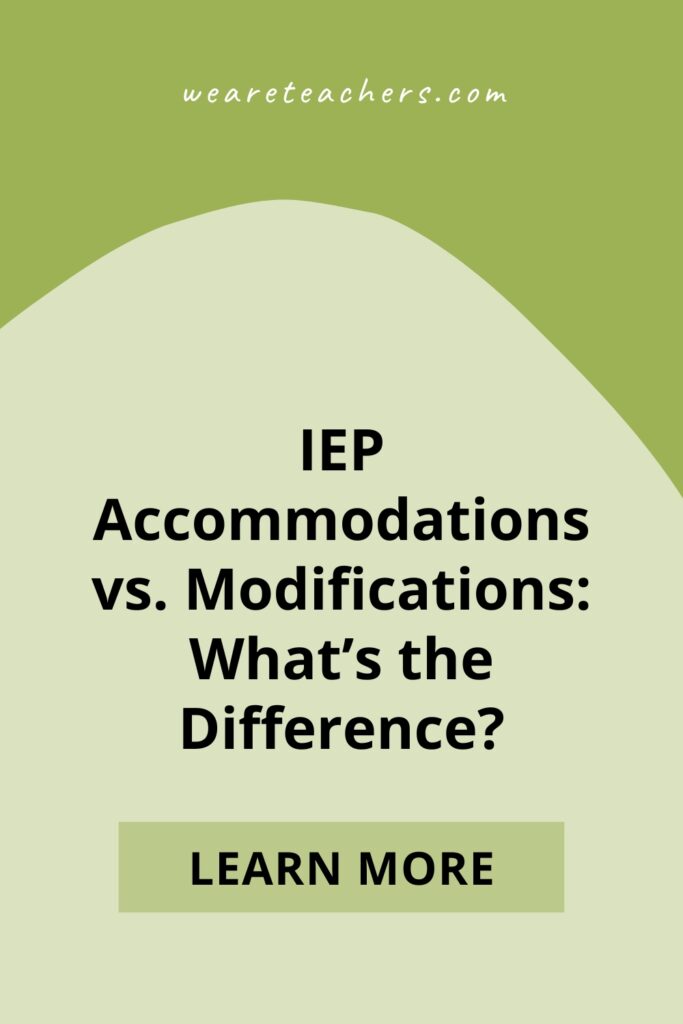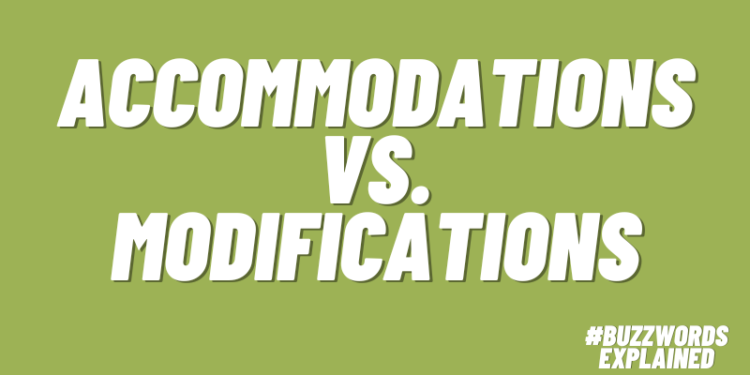As a teacher of students with disabilities, you’ll review their IEPs at least once each year. If you’re a general education teacher, the accommodations and modifications page is for you! An IEP is a legal document and must be implemented as written, so it’s important to know what accommodations and modifications your child has and how to administer them within your classroom.
What’s the difference between accommodations and modifications?
An accommodation affects how a student accesses material. These are provided within the general education setting and allow a student to access the general education curriculum. The expectations for what students are producing and what students are learning are the same. So, strategies that students are taught, ways students present information for assignments, and the length of time they have to complete an assignment are all modifications. If a student has accommodations, grading policies are the same as they are for the rest of the class.
A modification changes what the student is taught or expected to learn. The curriculum and learning outcomes are different when a student is provided with modifications. A modification could occur in the general education classroom, but the outcomes that students are expected to produce are not the same as their general education peers. The materials, tools, and technology are applied to help the child achieve the curriculum. Grading is appropriately adjusted to the needs of the student.
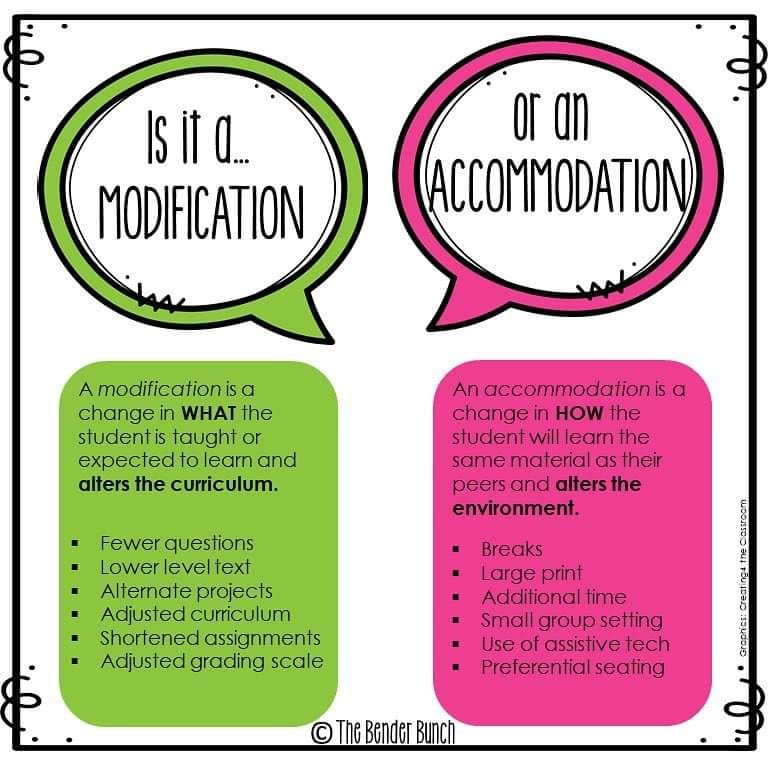
Source: The Bender Bunch
What are some examples of accommodations and modifications?
Accommodations don’t change what a student learns, just how they access it. Some examples of accommodations:
- Providing preferential seating (near the teacher, away from distraction)
- Providing visuals alongside verbal information (writing directions on the board and stating them, for example)
- Use of a calculator on math assignments
- Reduced homework assignments (fewer problems assigned)
- Permitting responses to be recorded into a test booklet
- Allowing frequent breaks (every 10 minutes, for example)
- Extend allotted time (by 60 minutes or double the time permitted for the test)
Learn more: Big List of IEP Accommodations Special Ed Teachers Should Bookmark
Modifications change what a student learns and how they’re assessed. Some examples of modifications:
- Having students answer in limited choices (select from three responses) rather than completing a response on their own
- Grading various aspects of an assignment. So, for some assignments, spelling or grammar doesn’t “count” in the grade.
- Providing an assignment that is “leveled” to the student’s current functional level
How are a student’s accommodations and modifications decided?
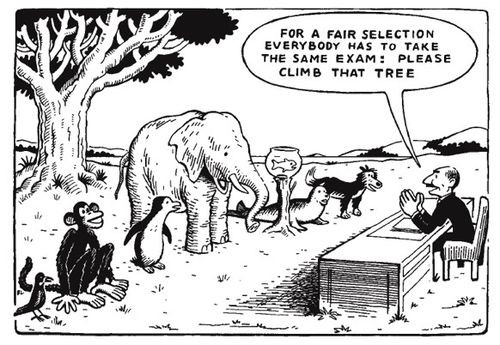
Source: Centre for Teaching Excellence Blog/The University of Waterloo
Students who have an Individual Education Plan (IEP) or 504 plan will likely have accommodations. Some students who have IEPs will also have modifications. When a child is determined eligible for an IEP, the team will use the evaluation results and teacher and parent input to decide which accommodations and modifications to put in place. For example, a child whose psychological testing indicated that they have a slow processing speed may have the accommodations of extra time to work on assignments and tests, and additional wait time when asked a question. A child who is eligible for an IEP under an intellectual disability may have modifications to their work and take the state’s modified assessments.
Read more: What Is an IEP?
What about 504 plans? Who decides those accommodations?
504 plans are for students who have a disability or diagnosis that impacts them in the school setting, but who do not require specially designed instruction. The accommodations provided are directly connected to the diagnosis. So, a child who has a peanut allergy will have accommodations like sitting at a peanut-free table. Or a child with a diagnosis of anxiety may be provided with a separate testing setting and the ability to ask for a break during work time. The specific accommodations are decided by the 504 team, including teachers and parents.
Read more: What Is a 504 plan?
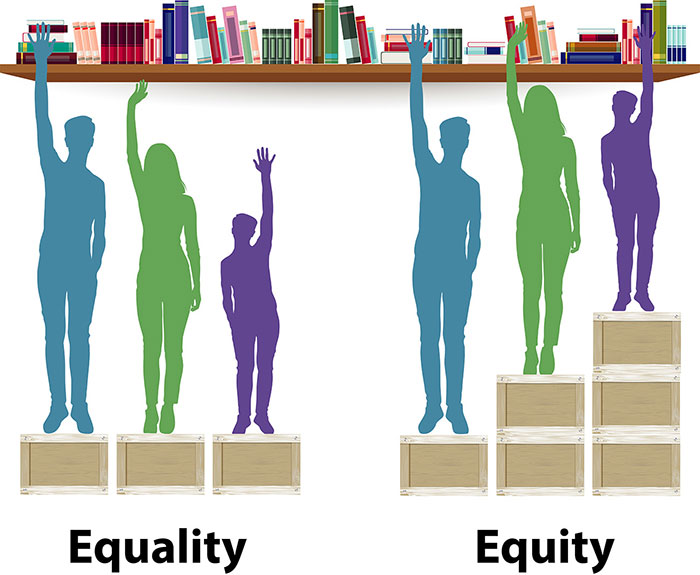
Source: IRIS Center/Vanderbilt Peabody College
How do teachers implement accommodations and modifications?
At the start of each year (or when you get a new student), review the student’s IEP to make sure you know their accommodations. For example, if you have three students with preferential seating, you’ll want to make sure your seating chart reflects this. At the classroom level, it may be helpful to have a checklist that helps you ensure you are administering the accommodations that happen during instruction—things like wait time, frequent check-ins, and restating directions.
If a student has modifications, you’ll collaborate with the special education teacher to make sure the student’s work is appropriate and that their grading and testing plan is being followed.
One caveat: Accommodations and modifications are not differentiated instruction. They are individualized to each student as part of their IEP.
Read more: What Is Differentiated Instruction?
How do I grade assignments for students who have accommodations?
For a child who has accommodations, you’ll grade their assignments the same way you would any other student. The student may submit a graphic organizer or record their essay into a talk-to-text software instead of completing it on paper, but the rubric and grading criteria are the same.
What if a child does not use their accommodations?
As students develop, they may not use or need an accommodation. For example, a child with extended time allotted on tests may simply not use it. In the same way, a child may need an accommodation that’s not in their IEP—taking a test in shortened chunks, for example. A child’s accommodations can be updated at any IEP meeting. It is helpful to have data on how a child is (or is not) using an accommodation.
It’s OK if a student doesn’t use an accommodation, but as a teacher you have to offer it. So, if a child has the accommodation of a graphic organizer for writing assignments, you have to give the option of using a graphic organizer. If the student pushes it aside and writes instead, that’s OK. However, this is something to bring up in the next IEP meeting.
Read more: What Is an IEP Meeting?
Have more questions about accommodations and modifications? Come talk it over with other educators in the WeAreTeachers HELPLINE group on Facebook.
Plus, read more about Specially Designed Instruction—it’s what special education is built on.
